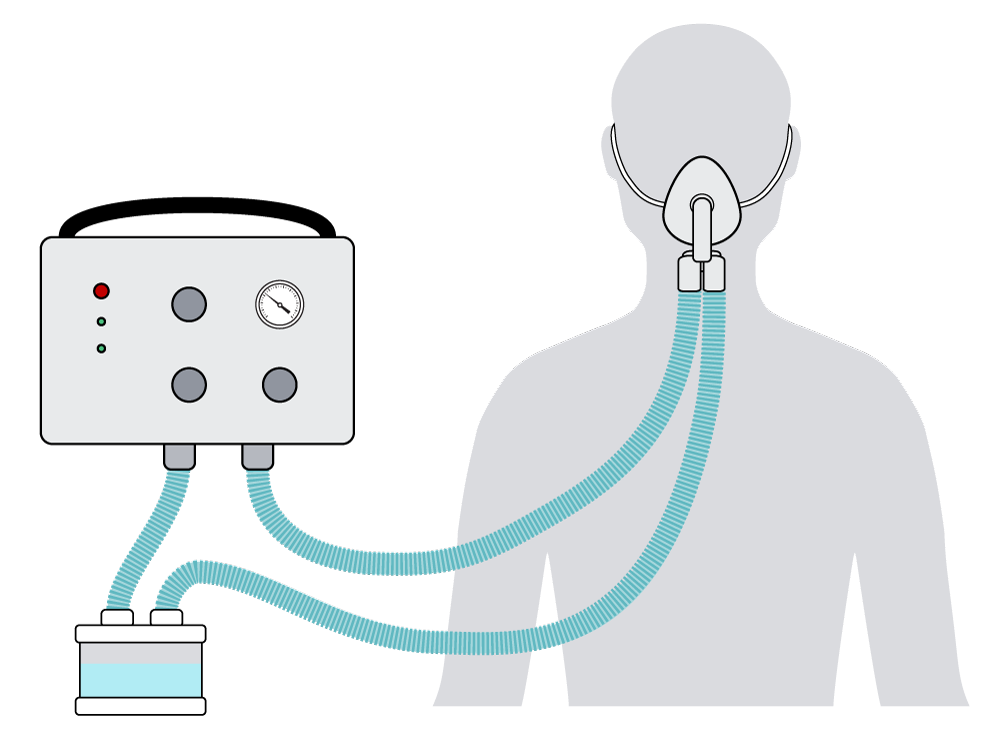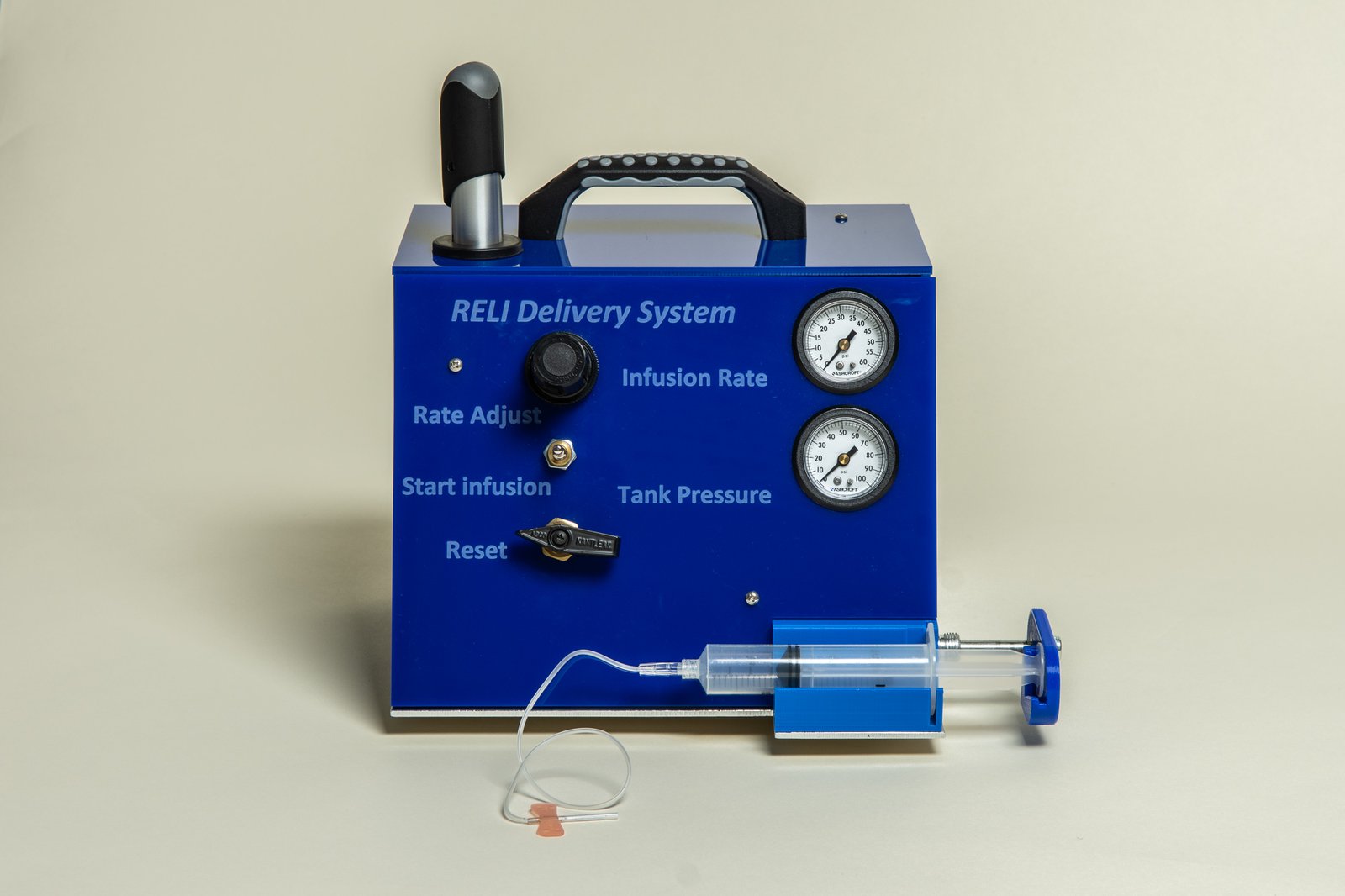As COVID-19 spreads, health systems are straining under the surge of additional patients. But every day is a surge day when you have no way to access to essential supplies like ventilators, personal protective equipment, or disinfectants.
Right now, PATH's device team is creating (or converting) four health products that could increase treatment capacity and slow the pandemic's spread in underserved communities. All four are designed for settings without electricity or running water. Some will be available soon, while others are still being developed.
“With local and global partners, our development teams have focused on finding rapid, inventive solutions to address the current gaps in medical supplies for COVID-19 patients and health care workers. At the same time, we are looking at projected health needs to accelerate sustainable, long-term access to these technologies for the people who will need them most,” says Darin Zehrung, director of Medical Devices and Health Technologies at PATH.
“We are looking at projected health needs to accelerate sustainable, long-term access to these technologies for the people who will need them most.”— Darin Zehrung, director of Medical Devices and Health Technologies
Ventilators: A field-ready design for rapid response

A prototype for a small, lightweight, and mobile ventilator for use in pandemic hotspots and low-resource health facilities. Photo: PATH.
Globally, we're facing a shortage of ventilators due to COVID-19. In some of the countries where PATH works, that shortage is in the thousands.
In Seattle, PATH is working with a group of doctors and engineers to advance a mobile rapid-response ventilator. The ventilator is small, lightweight, and a fraction of the cost of those currently available—making it useful in clinics and field hospitals around the world. One prototype just passed its first lab-bench tests with an artificial lung.
In addition to the rapid response design, PATH is also evaluating the feasibility and regulatory pathways of several other types of ventilators as well, including open source.
Bubble CPAP kit: A ventilator alternative for infants and toddlers

PATH Bubble CPAP kit provides respiratory support to newborns who have difficulty breathing. Photo: PATH
PATH and partners developed the Bubble CPAP kit, a simple and affordable solution that helps preterm newborns breathe by blending oxygen with air from the room. The proportion of oxygen and ambient air is critical—too little oxygen and the baby becomes hypoxic, too much and the baby could go blind. The device is designed to manage this ratio, all without electricity or compressed air.
The Bubble CPAP kit has applications beyond preterm newborns as well. For example, by adding a pair of earplugs to create a nasal seal, the kit could help increase blood oxygen levels for infants and toddlers with pneumonia—freeing up ventilators so desperately needed for COVID-19 patients.
COVID RELI: Infusion pumps powered by air alone

The unique design includes a pressurized sleeve that surrounds existing IV bags to produce a controlled rate of delivery of fluids and medications. Photo: PATH
With so much attention focused on ventilators, it's important not to lose sight of another critical device used for COVID-19: infusion pumps. Patients fighting the disease, especially those on ventilator assistance, require continuous infusion of medications, nutrition, and other fluids as part of their treatment.
Infusion pumps are in such demand, the U.S. Food and Drug Administration has issued temporary guidance for modifying current designs in the hopes of preventing a shortage. PATH is building upon an existing design to develop an affordable and reusable infusion delivery system that does not require electricity and is powered by air alone: the COVID RELI infusion pump.
Chlorine generator: A steady supply of disinfectant

THE STREAM™ Community Water Disinfection System developed by Aqua Research LLC is fully automated to ensure a consistent chlorine concentration of 5,000 mg/l, the WHO standard for cleaning hospital settings. Photo: Aqua Stream.
Chlorine is an effective and low-cost chemical disinfectant, widely used in health care settings. At higher concentrations, it cleans surfaces and equipment. When diluted, it provides safe water for drinking and washing hands. Access to a disinfectant like chlorine is especially important during epidemic emergencies like COVID-19. If clinics and hospitals can't disinfect surfaces and equipment, the safety of patients, health workers, and the entire community is put at risk.
Unfortunately, keeping chlorine on hand is a challenge for many health care facilities, primarily due to unsteady supply chains. That's why PATH is accelerating the introduction of a reliable onsite generator that can produce chlorine using only salt, water, and electricity.
The generator can produce enough disinfectant to treat 240,000 liters (about 63,400 gallons) of water per day—providing clinics and hospitals with the steady supply of chlorine they need to keep their facilities safe.


